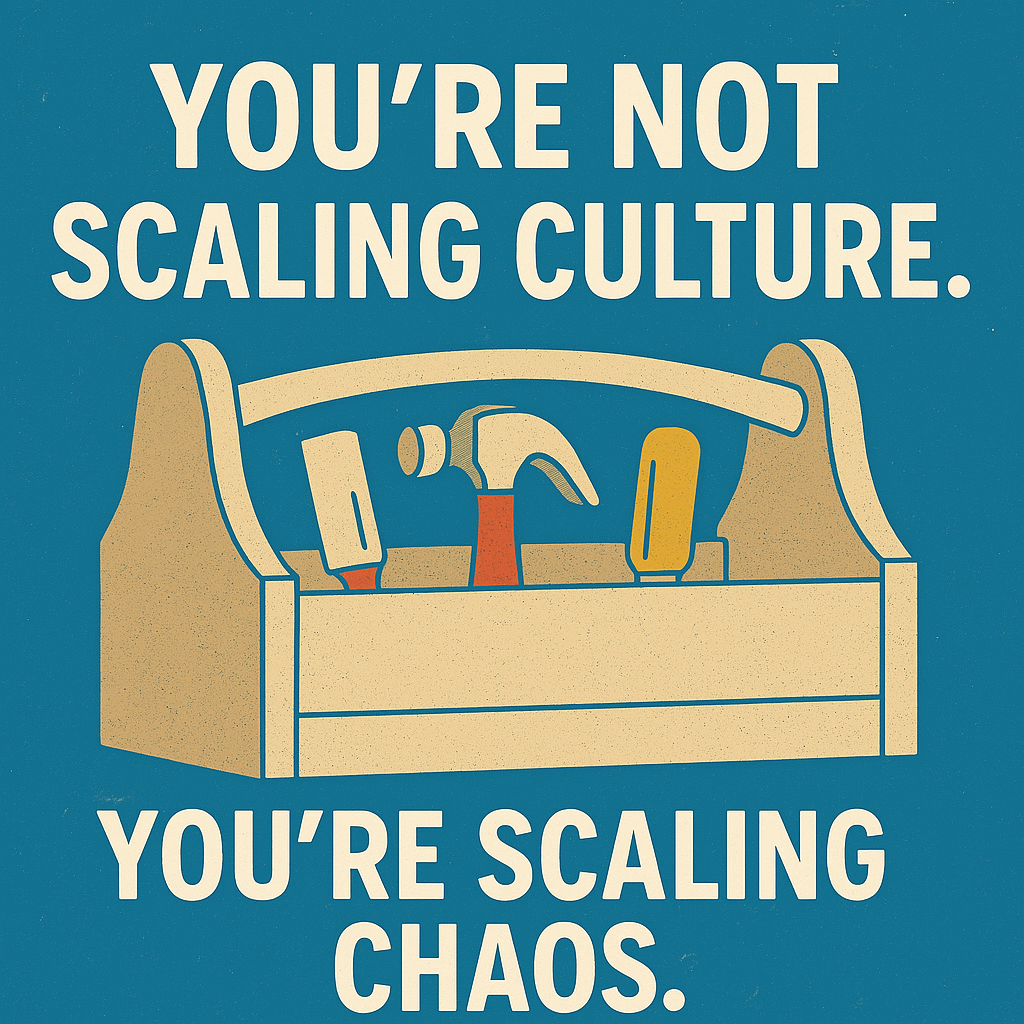Flat Org, Broken Tools | Why Structure Enables Speed as Your Company Scales
When I was a kid, I had this little tool set. It had a real hammer, a real chisel, and a real saw—-all perfectly functional, just child-sized. That tiny saw was fine for balsa wood birdhouses and minor projects. But as I got older and my projects got bigger, the limitations showed. That little saw just couldn’t handle a 2x4.
Same goes for organizational structure.
A flat structure works great when your company is small. Everyone talks to everyone. Communication is natural. Decisions get made quickly. At some point, however, the scale changes—and your toolset needs to change with it.
Flat Structures Work… Until They Don’t
The flat org is a noble idea. You want to stay connected. You want to avoid bureaucracy. You want to be the kind of leader who still knows what’s going on at every level. In the early days, that works. Just like my old tool set—it was perfect for what I needed at the time. If everything goes right, the projects start to get bigger and that 6 inch hand saw just isn't cutting it anymore. The same goes for your flat structure.
Take SHIELD Illinois.
When I joined, there were about 20 people in the entire company. We had twice-a-week all-hands meetings, and it made sense. Within months, we were well past 100. The meetings kept growing—and quickly got out of hand. We spent more time explaining than executing--not everyone can or should know everything (see my article about the snow shovel for an example). It wasn’t about transparency anymore. It was noise. So, we added layers. Not for the sake of control—but for clarity.
SHIELD never had a traditional org chart. What we had was a communication hierarchy. A structure that ensured people got what they needed to do their jobs, without everyone weighing in on everything. It made us faster, clearer, and more resilient. Structure didn’t slow us down—-it made speed possible.
Flat in Name Only
Even in companies that swear by flat structures, informal hierarchies always emerge. It’s human nature. Some people start taking the lead because someone has to. Best case? They’re natural leaders who fill gaps without being asked. Worst case? You end up with invisible power structures—-unofficial, unaccountable, and often unhealthy.
That kind of setup burns people out. It breeds resentment. This makes it nearly impossible to scale.
So here’s your choice:
- You can build structure intentionally or
- Let group dynamics do it for you.
One of those paths leads to growth. The other leads to dysfunction.
Leadership by Osmosis Isn’t Strategy
Even if your flat org avoids the power struggles, it still pulls your focus in the wrong direction.
In a flat firm, the CEO ends up playing team lead, project manager, and final approver all in one. The outward-facing responsibilities—industry trends, competitive shifts, growth strategy—get squeezed out. You’re too busy being “accessible” to actually lead.
That might feel good in the moment. You’re connected. You’re in the trenches. Long term, you’re letting your people down by not doing the job they actually need you to do: steering the ship, not rowing it.
The Right Tool for the Job
I still own that tiny hammer, chisel, and saw.
They live in a drawer in my basement.
They’ve come in handy for a few small projects—-and they’ll always remind me where I started.
When it’s time to rip a 2x4 or frame a wall, I don’t reach for nostalgia. I reach for tools built for the scale of the job. Same goes for your company.
If your firm has outgrown the flat structure, do what’s right for your people and the business. Put the tiny saw back in the drawer. Pick up the circular saw. Build something that lasts.
Your company has matured. Has your org chart?

